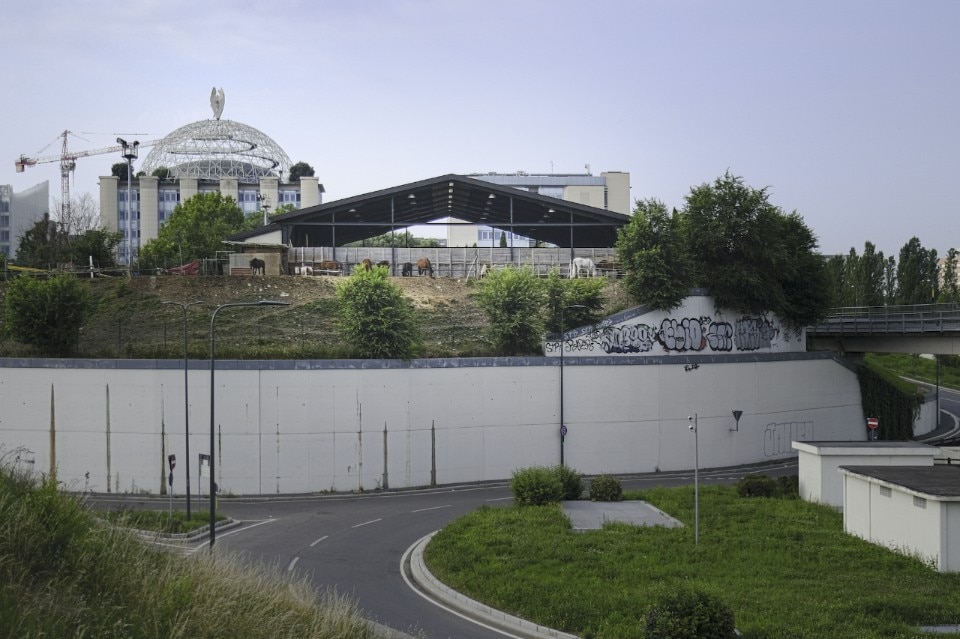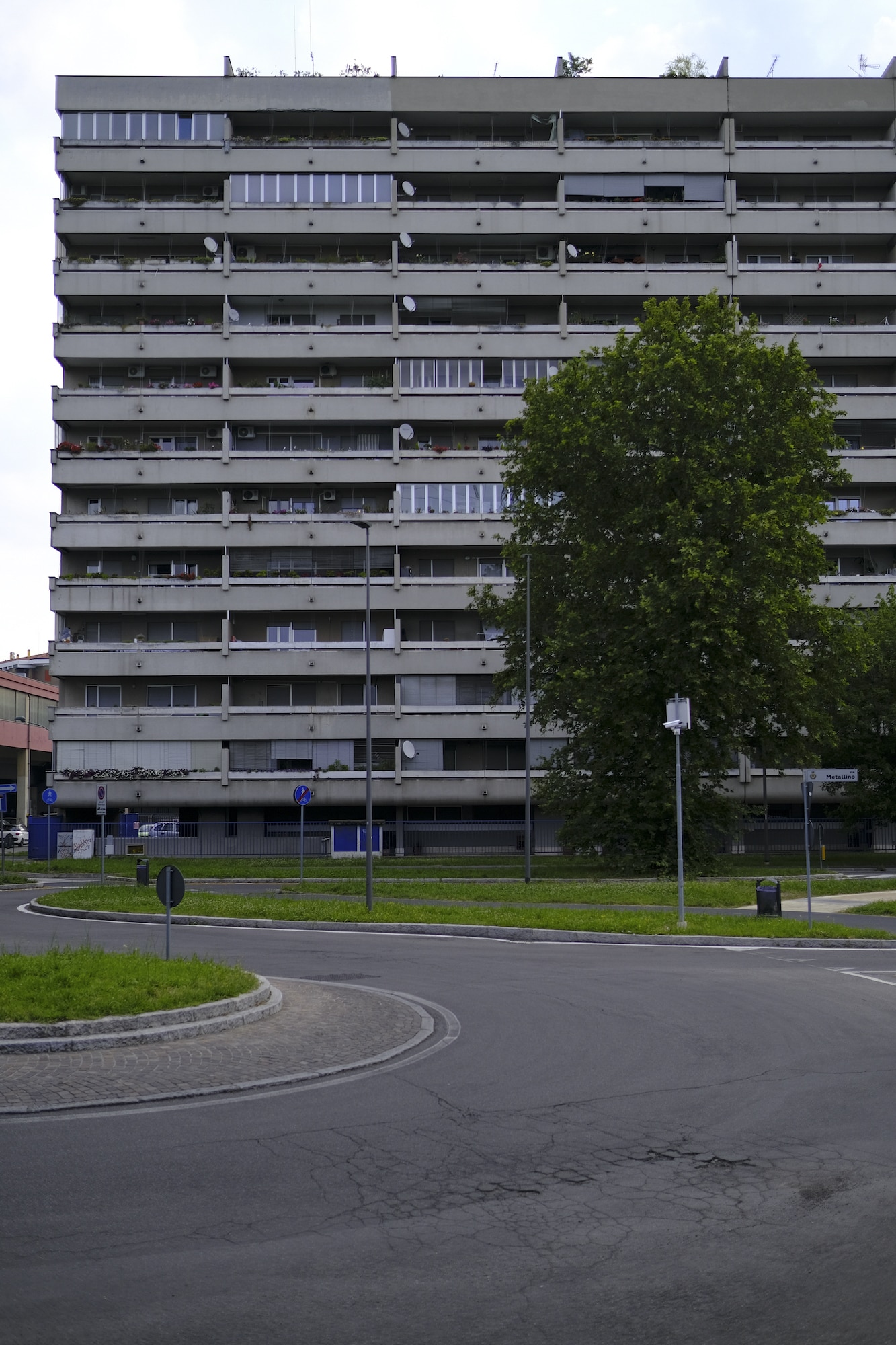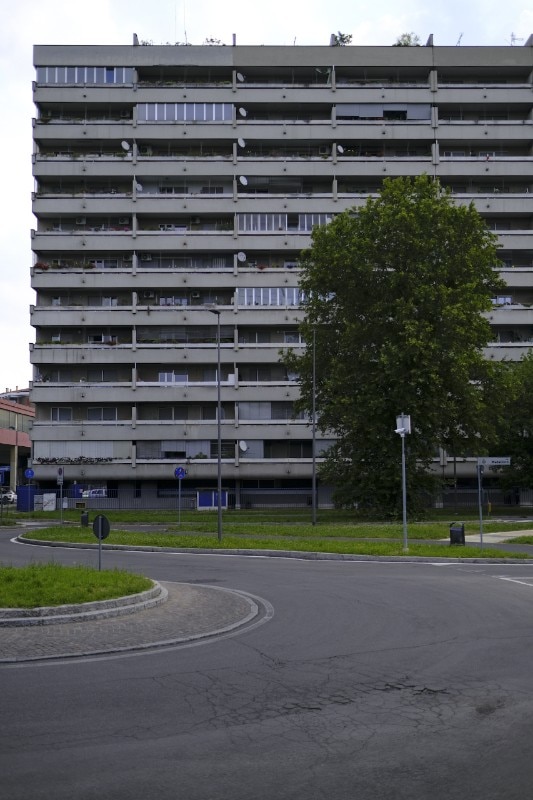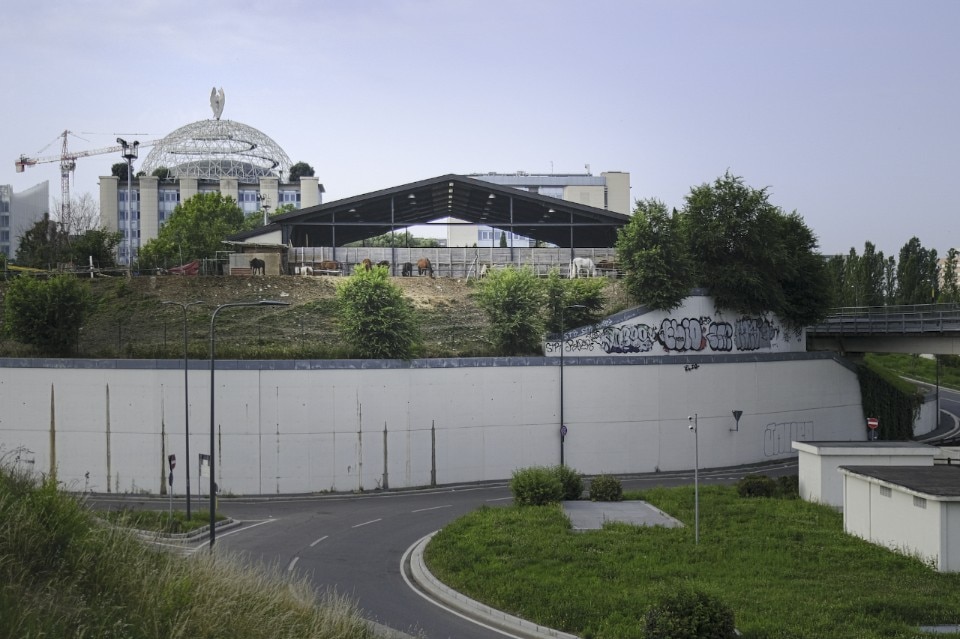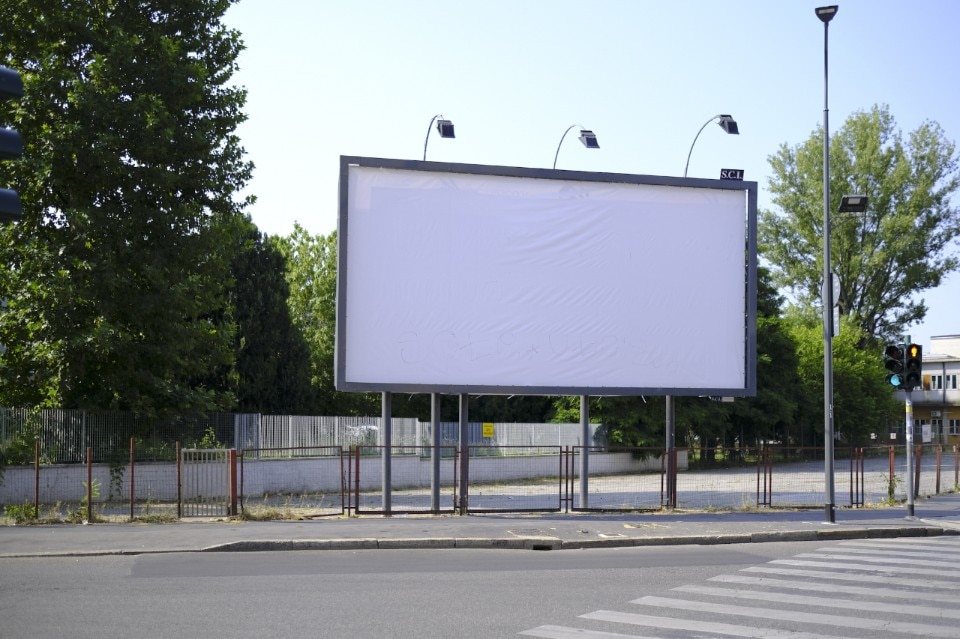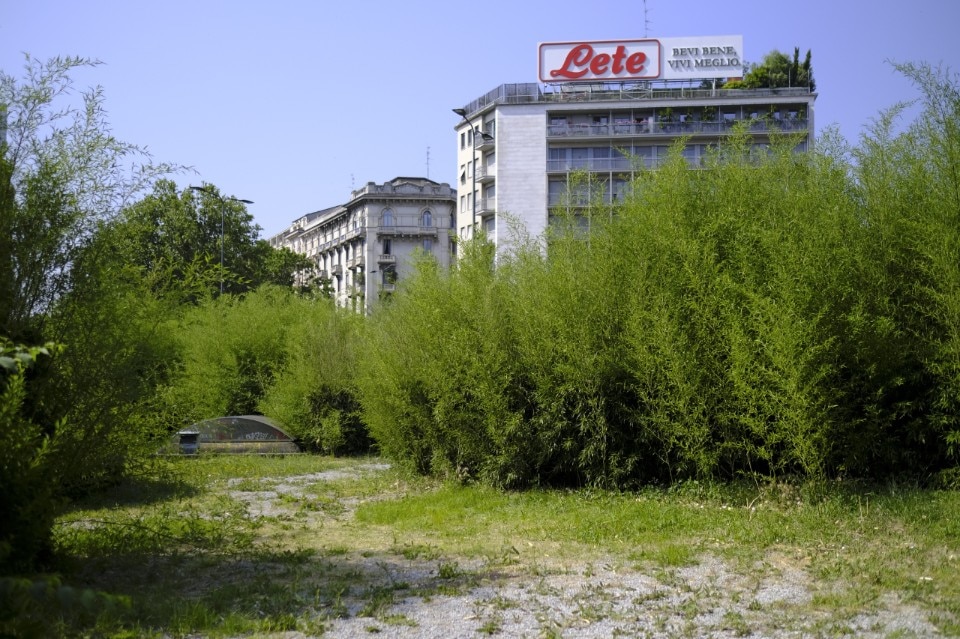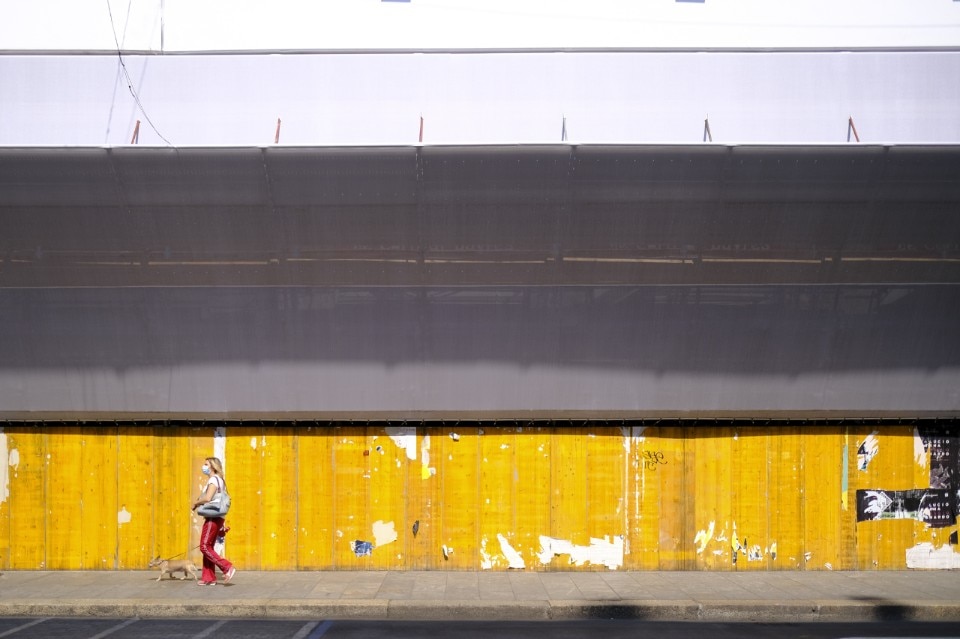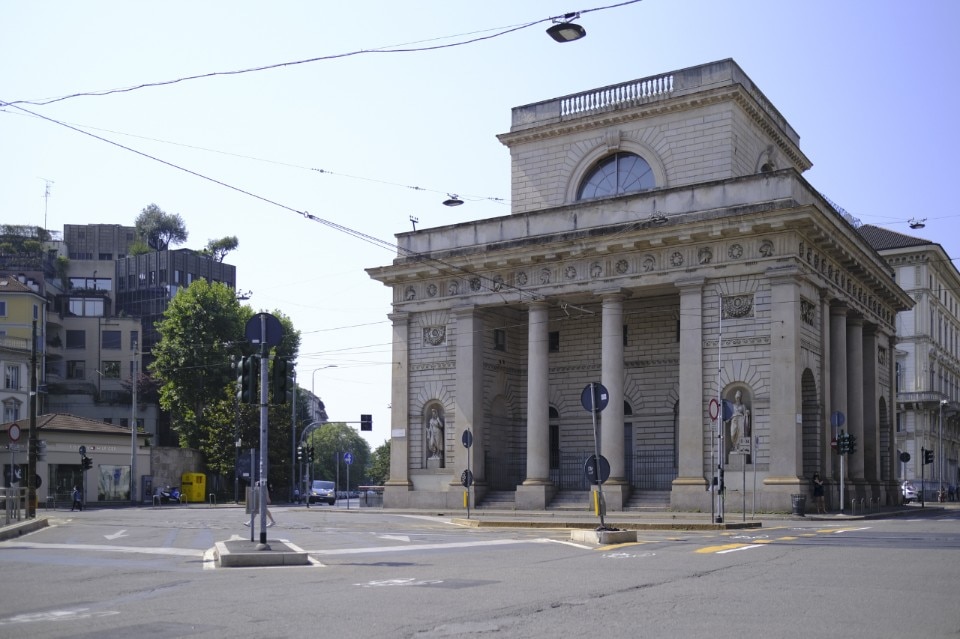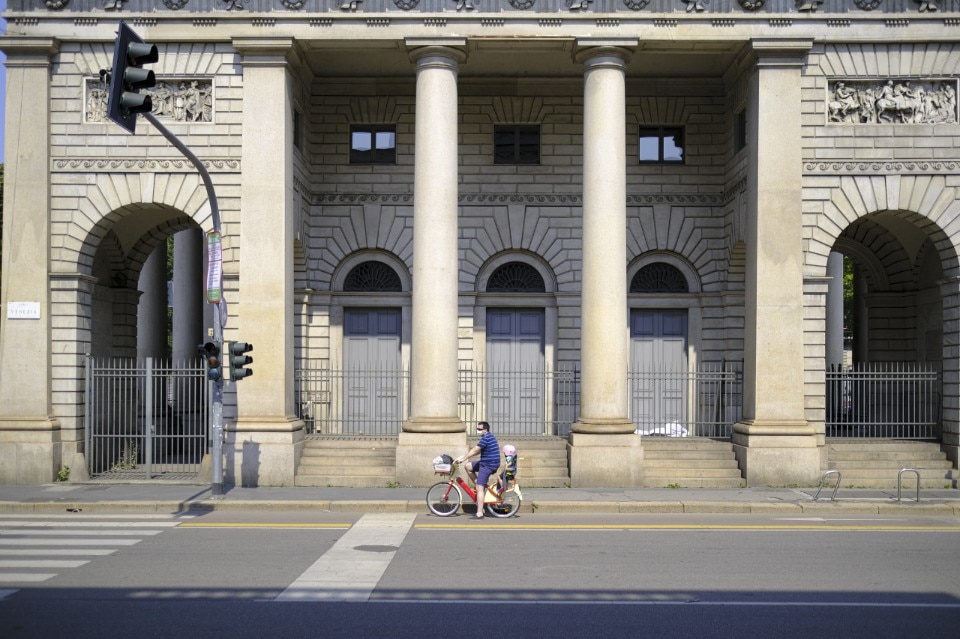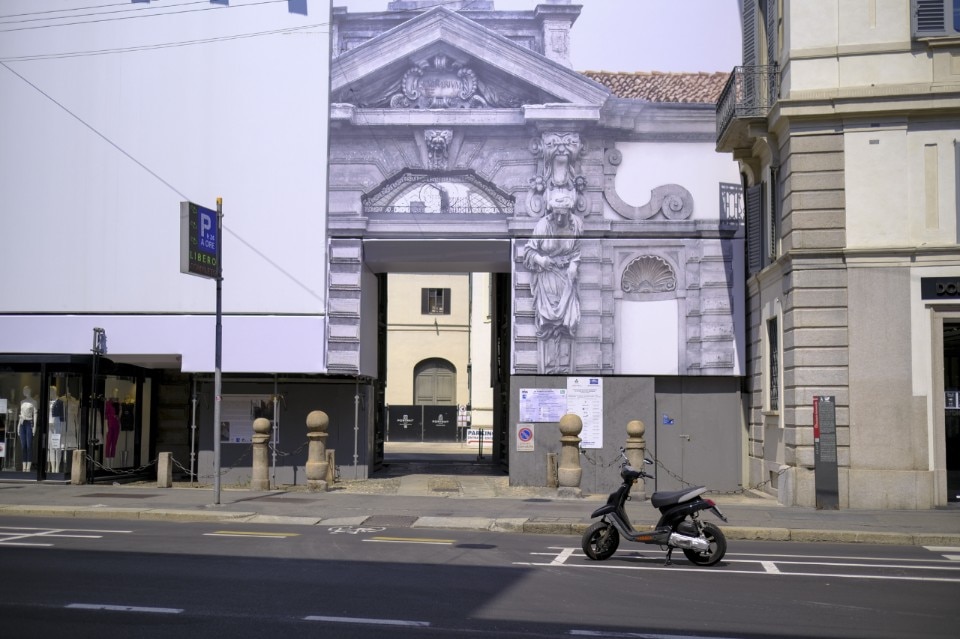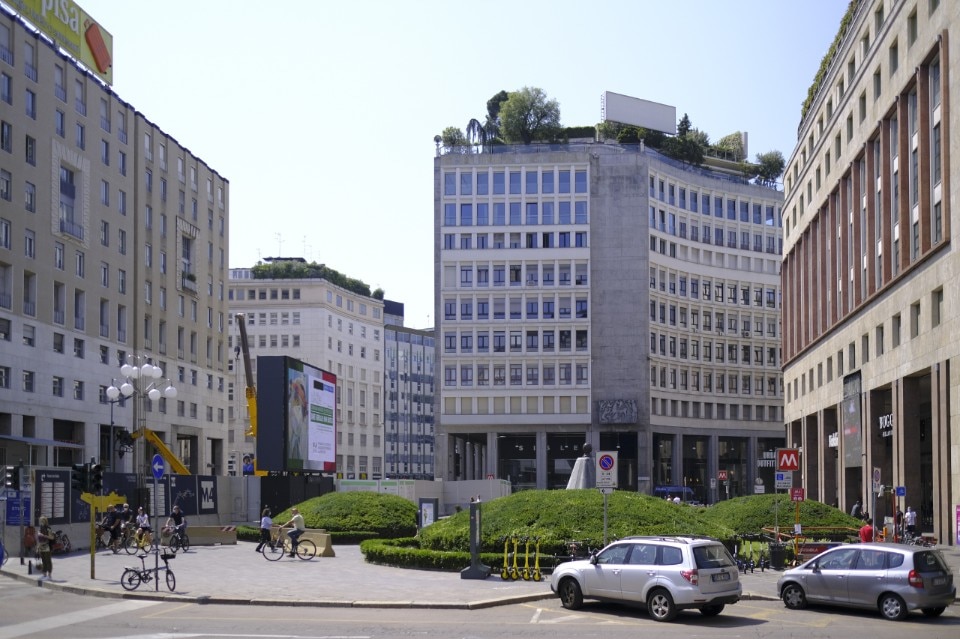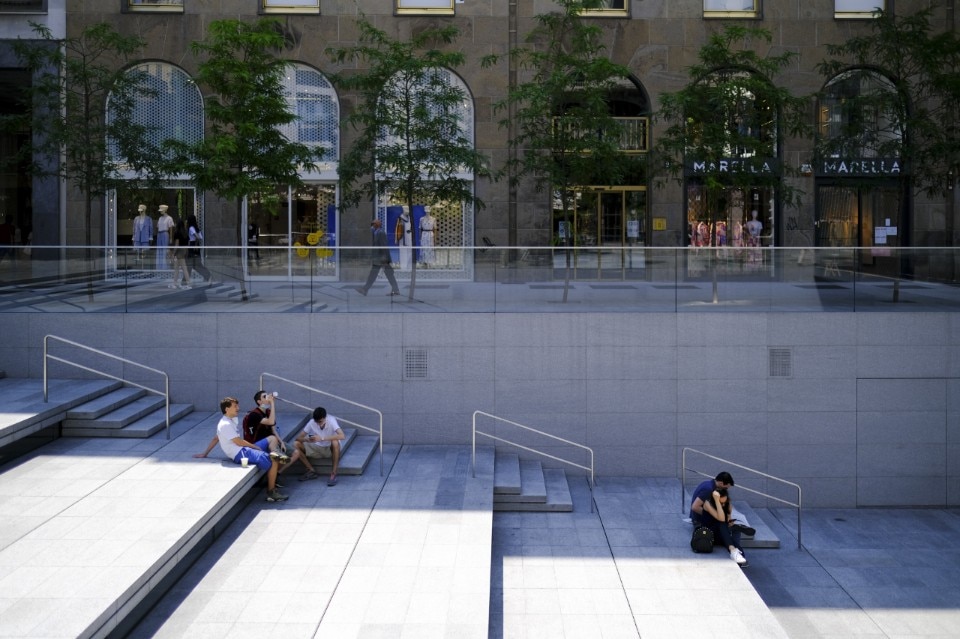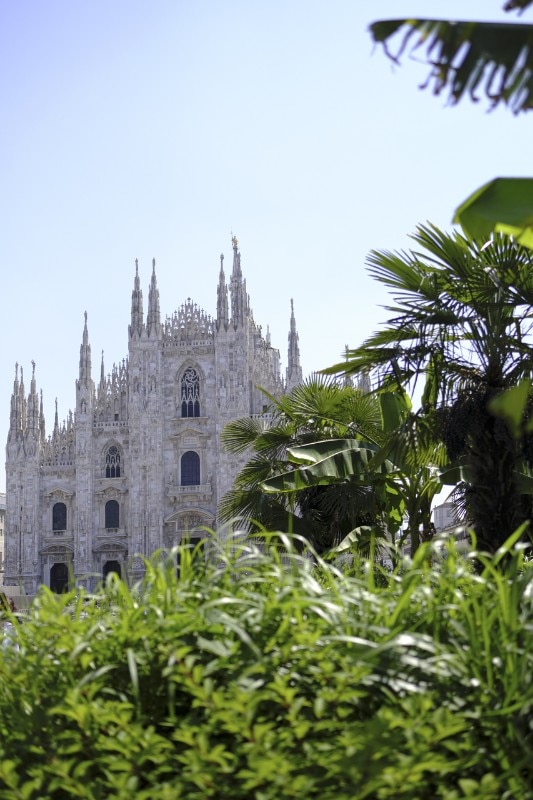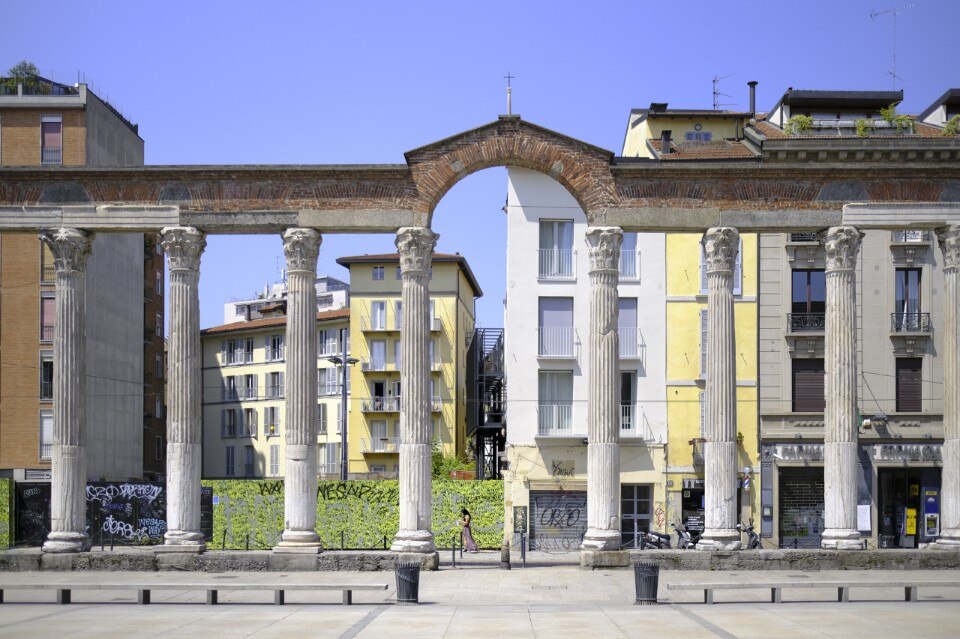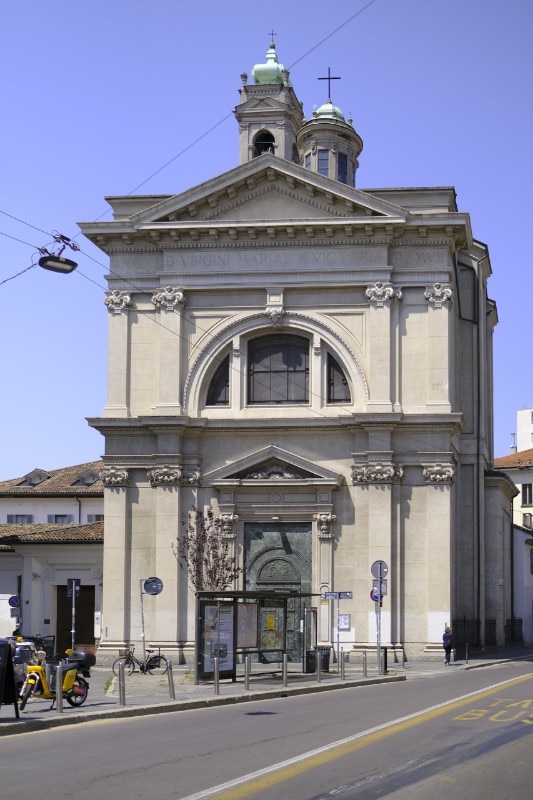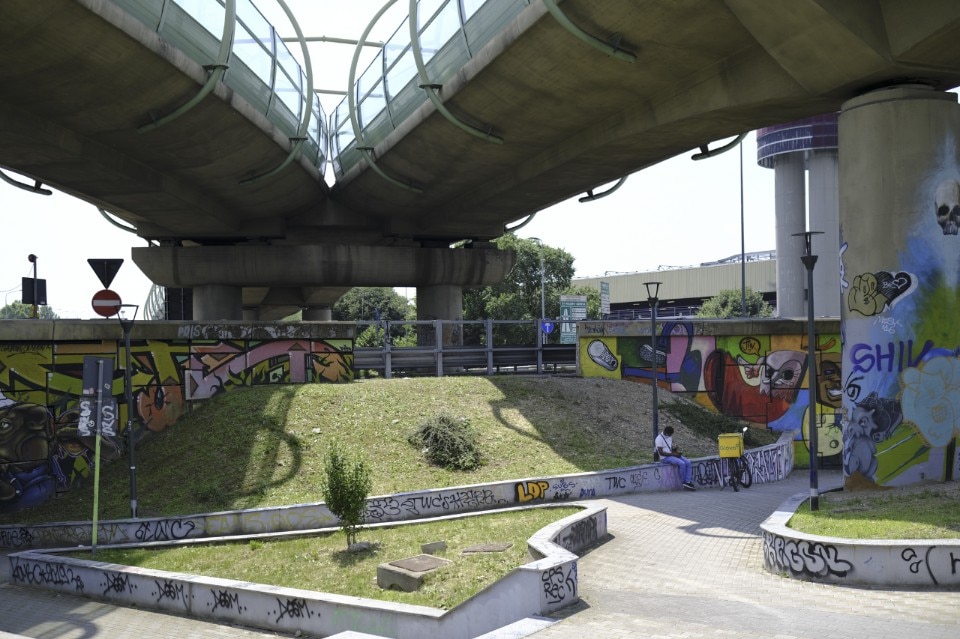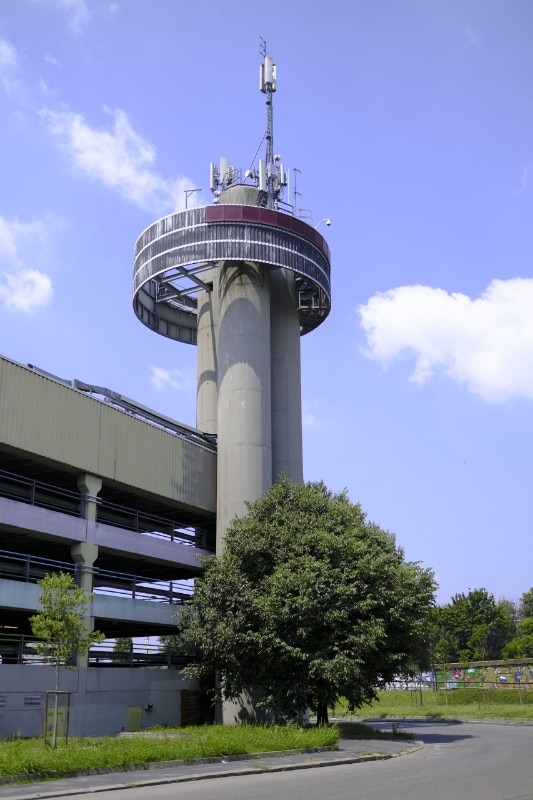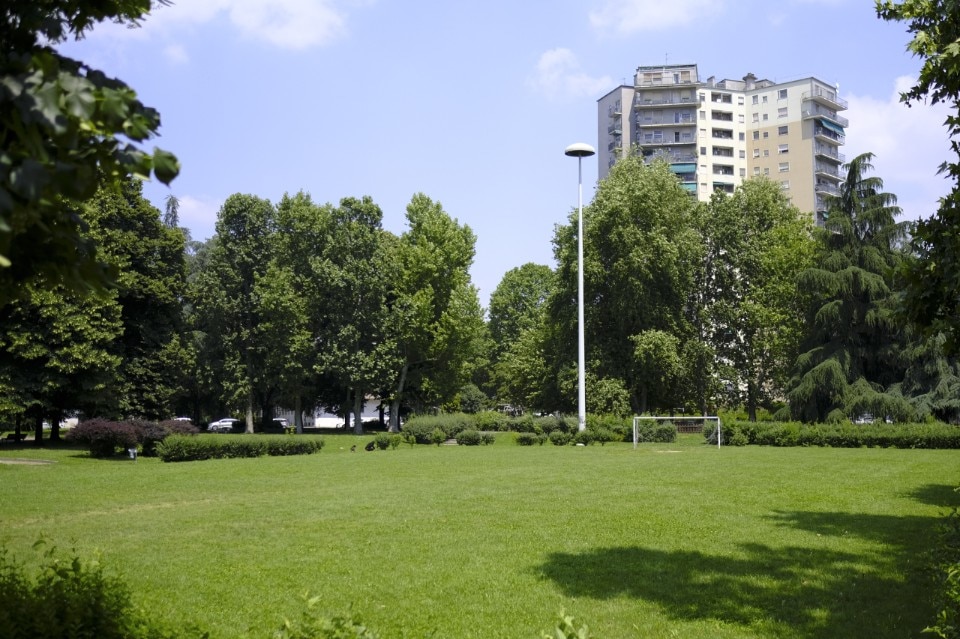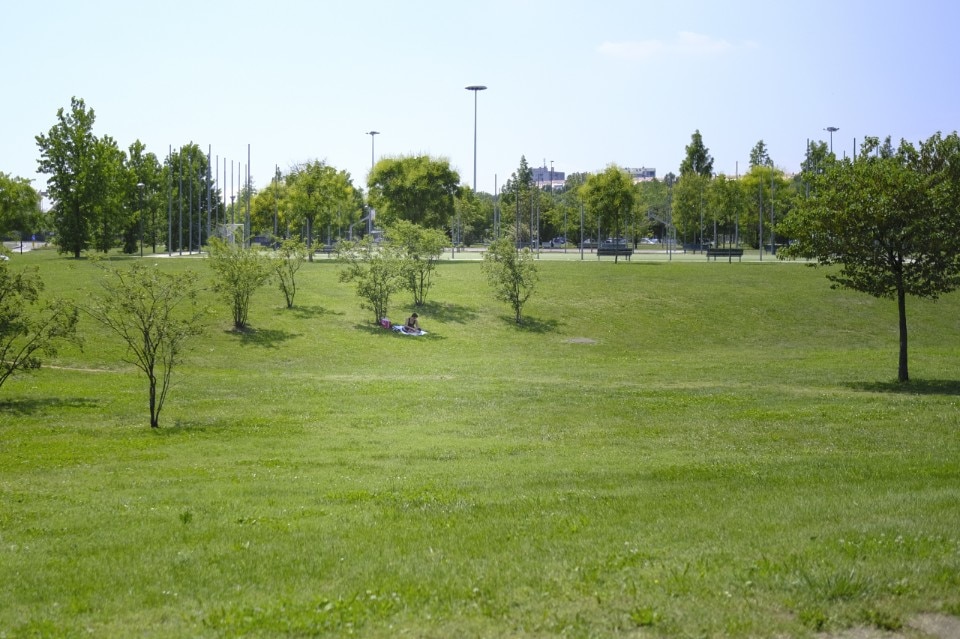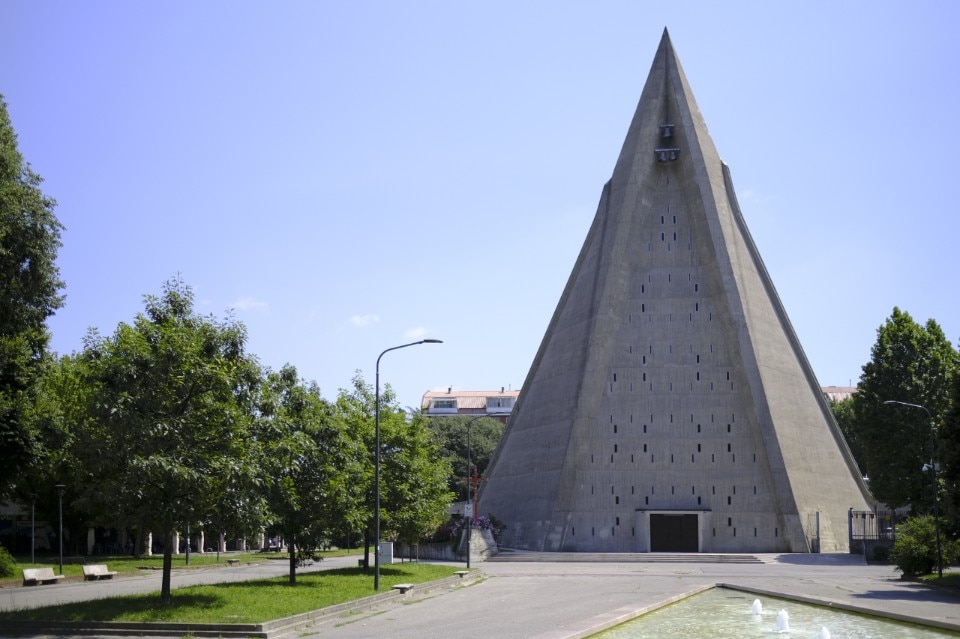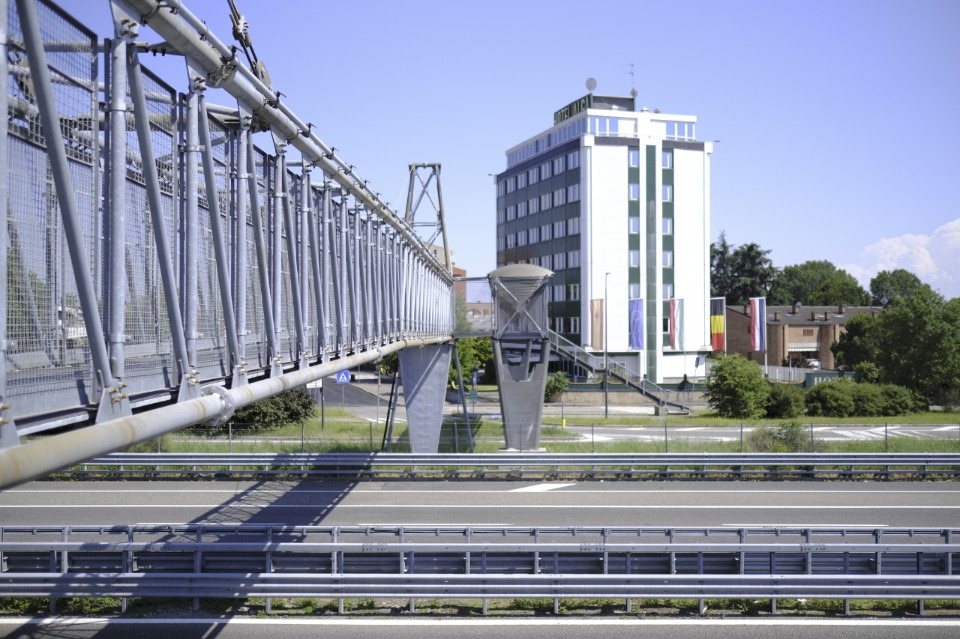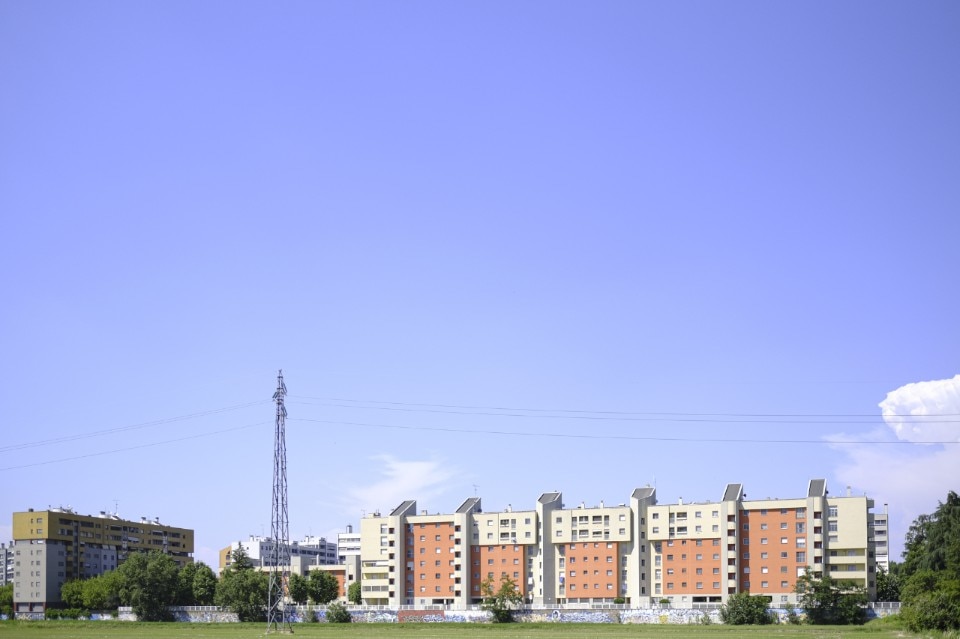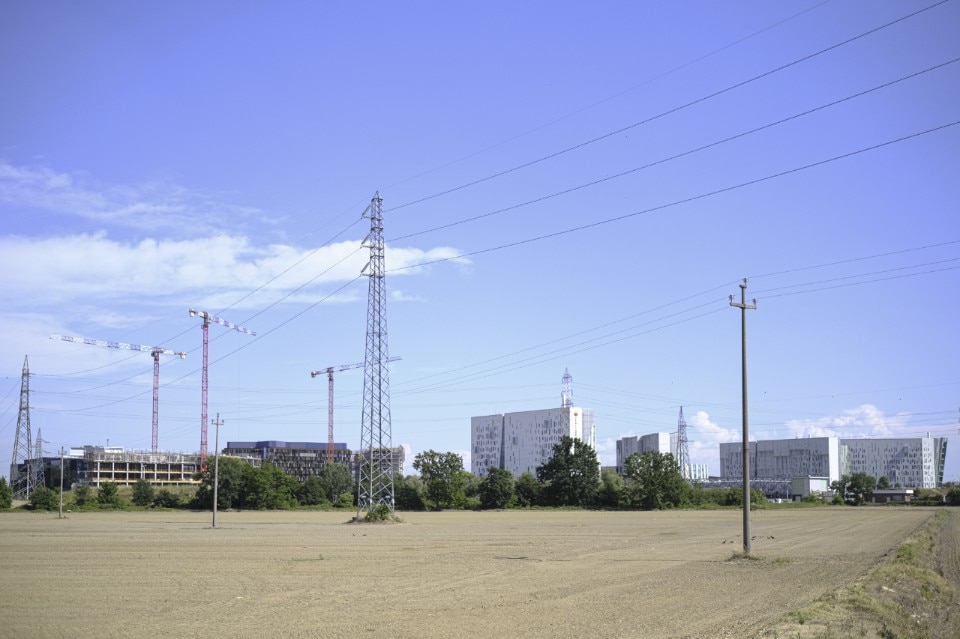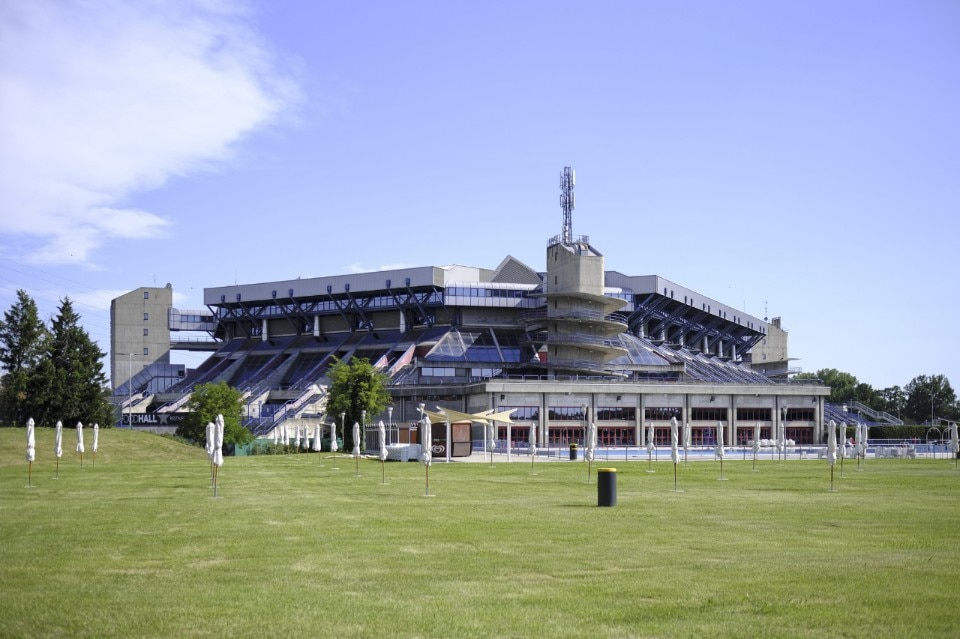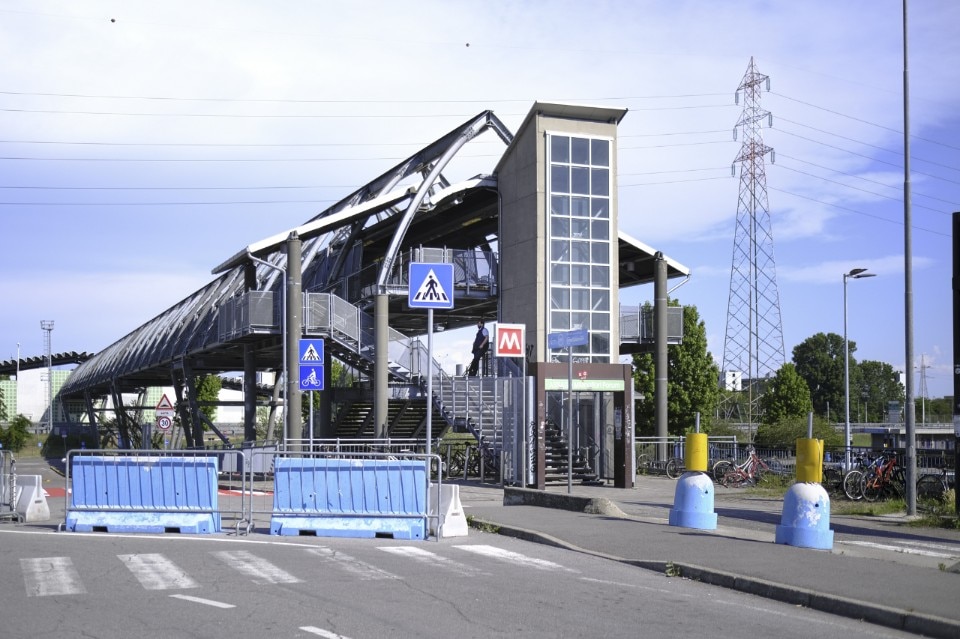It’s 6.30 am on June the 2nd and I’m about to walk from Cologno to Assago: from the extreme north-east to the extreme south-west of Milan. Milan is the moral capital of Italy, a metropolitan city of 3.26 million inhabitants in the middle of the Po Valley and within a region that is among the most affected by Covid-19 pandemic, with over 16,000 official deaths.
But why am I there?
I am there because every year for the past ten years I have been embarking on this small venture, which is my trip through Milan. It’s a small venture because it’s really within everyone’s reach, even without training, and it can be completed in less than a day’s walk; but it’s still a venture, something that not everyone does, or feels like doing, or thinks about doing.
They are wrong, because walking, even better if you do it alone, is really good for your mind, just think about how to put one foot in front of the other - and don’t even think about it - and discover the city in times and ways that would normally be unthinkable. So it’s worth leaving for the trip through Milan, isn’t it?
Cologno immediately disappears along a highway where there is no trace of cars and which leads to the San Raffaele Hospital. It’s all green, the city is not there. The north of Milan, even outside the municipality of Milan in the strict sense, has always given me this idea: very green. The impression I had is corroborated by what I have around me walking from Cologno to the San Raffaele, in the direction of Cascina Gobba: parks everywhere, no buildings, just a few man-made constructions. There is practically nothing in this part of Lombardy between Cascina Gobba and Cologno, it’s all green, highways, tunnels, more green, a great sense of peace, green again. It may be because it’s morning time, since it’s around 7 a.m. on a feast day, but obviously I don’t meet any human being on foot or by car for miles.
At least not until after 30 minutes’ walk, when I see the San Raffaele Hospital. I arrive at the back of the main building, the one with the gigantic Angel on top, which stands 60 meters high on the cupola of the hospital - the angel is actually an archangel, obviously Raphael: it is eight and a half meters high and weighs 3200 kilograms - and is anyway visible from other galaxies. However, coming from Cologno, in a certain spot there is a sort of hippie view: a huge roundabout surmounted by a riding stable with a few dozen horses, and in the background the archangel.
To get more in the direction of Milan, however, you have to go back and take the last, very final stretch of Via Padova - at some point I see a rare three-digit house number: it’s Via Padova number 400 - and pass the subway station of Cascina Gobba, in order to proceed towards the urbanization, towards the buildings, towards Viale Palmanova. This is where civilization begins. It is a place that we can call an outpost between the city and the non-city. Indeed: between non-city and civilization.
And it is a civilization of normal or public houses, of small open ethnic shops, of microscopic little cafes, where a Fiat Panda Italia ’90 - white, with the Ciao mascot and the tricolour along the side - is parked down the street by someone who drives it unironically. He just drives it for what it is, an industrial object, without nostalgia. It’s a Fiat Panda, it works, he uses it. I head towards Via Padova through the little streets that separate it from Viale Palmanova, a few hundred meters. There is not much that is relevant and there is a lot at the same time: some madman has stuck messages of hatred against Giuseppe Sala to the Enel control units, and torn up by someone they resemble small involuntary Rotella.
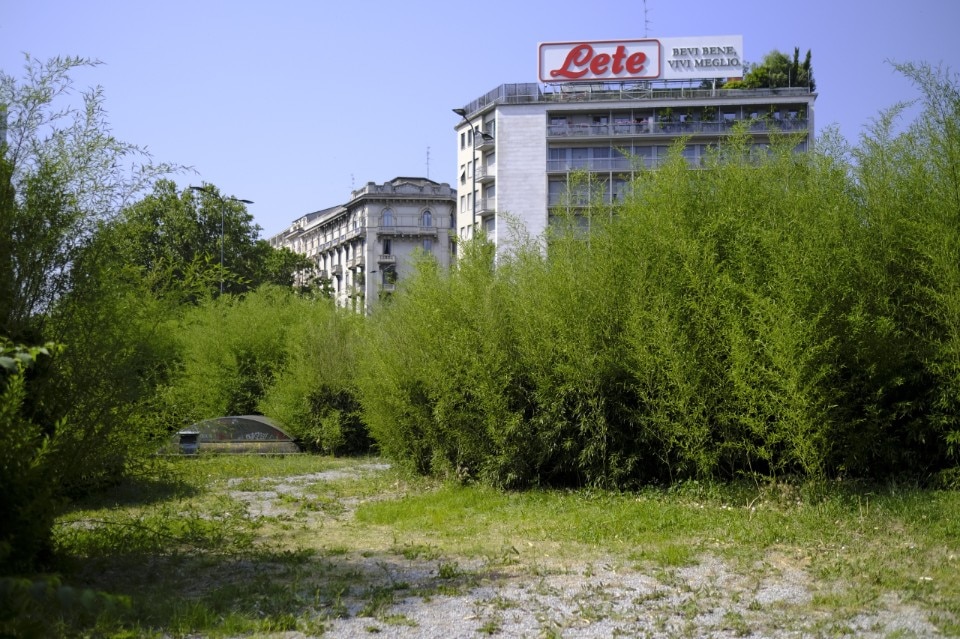
Via Padova then: full of life, we know, and that life is the life of Milan today and tomorrow. The shops are mostly open, traffic begins to grow, and there are people around. Masks aside, it’s like being in the same city as usual. Like June the 2nd of 2019, or 2018.
In the post-Covid Milan, however, there is one industry, among the many affected by a crisis whose real and certainly devastating extent we have yet to fully understand, which has been struggling for several months: the billposting industry. The 6 x 3 spaces are almost always available, sometimes with accidental surrealist effects - the billboard replaced by a cobalt blue sky, seen by a gas station attendant - sometimes immaculate, white, sometimes light blue.
Always in the same street, Via Padova, there is also room for a short pilgrimage to one of the last porn cinemas in Milan, l’Ambra, in Via Clitumno. It has been closed and abandoned for some time, but you should remember that the last red-light club of this kind was the Pussycat, on the other side of the city, near Piazza Tirana, Giambellino / Lorenteggio.
Via Padova thus allows me to proceed towards the semi-centre of Milan, between a balcony overlooking a cafe covered with a huge tricolour flag and a closed shutter, an open shop and an open cafe with a Plexiglas shield separating the Chinese barmaid from you and your coffee, up to Piazzale Loreto: a junction that will change in the coming years, that will be totally different, of course.
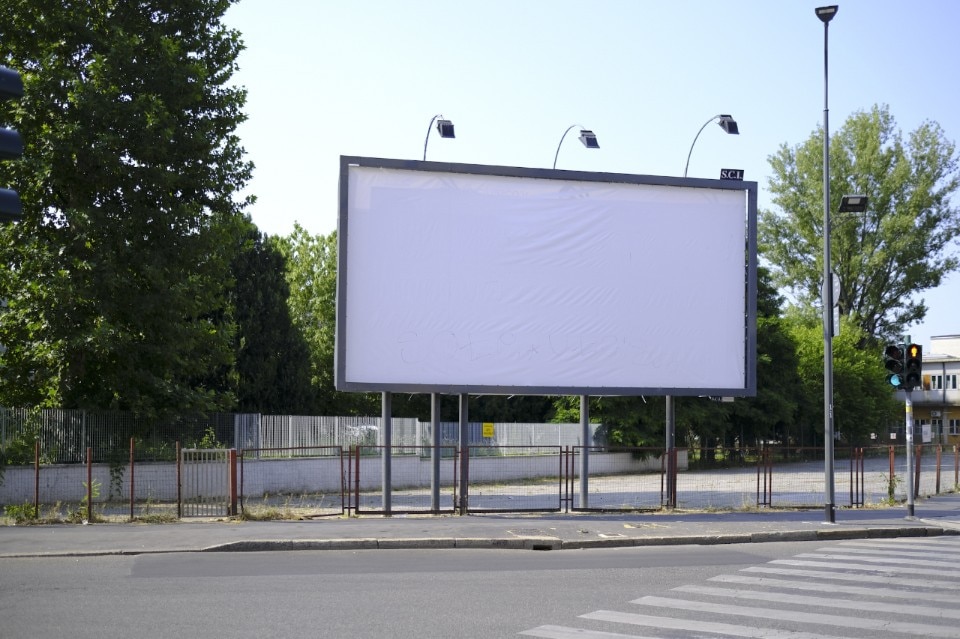
ut for now, it is still the same old Piazzale Loreto, moderately busy given the time, with the greenery in the middle of the square that I quickly explore among the tall bamboos and the cars that go around, thinking back to the urban legends that rumoured that there was someone living in a tent there in the middle. At present the heart of the square is - I can’t really say if fortunately, or unfortunately - uninhabited.
Along Corso Buenos Aires there is something new - the cycle paths built during the months of Coronavirus, a good, excellent idea - but otherwise it is still the same street as always. I have to say: if it was a pedestrian area, it would be better. As with everything, it will take some time, but we will come with a solution. There are a lot of bicycles around, a lot of electric and non-electric scooters, huge ironic Netflix billboards, massive buildings without billboards, completely white with only a yellow wooden fencing, which become great backgrounds for passers-by to take pictures. It’s a normal vacation day this June the 2nd, and the ones who can do it leave the house.
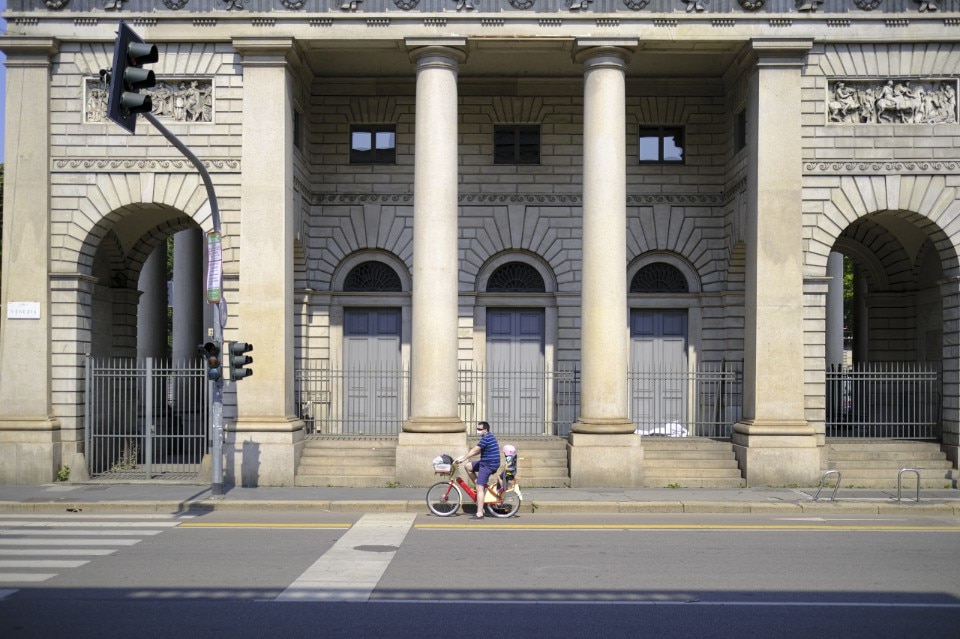
The walk goes on, with great calm, with a great desire to waste time or indeed: don’t even think about time.
Around 11 am I arrive in front of the first real entrance, a real border to cross, the Porta Venezia gate. What today marks the entrance to Area C was once - centuries ago, since it dates back to 1827 - something else.
Once you cross the border, you enter Palestro.
The air you breathe is the same after all, the passage, and the shifting of the landscape, when the movement is as imperceptible as a man’s step, is not perceivable. Milan seems like a large nuance, without any distinct separations, there is no moment when you can remark a clear, distinct, unequivocal contrast.
Maybe when you see the ring roads, or not even then.
Via Palestro offers what it always offers: a high bourgeoisie Milanese distillation. The internal streets, proceeding towards Piazza San Babila, like Via Mozart, Via Serbelloni, are and remain the best expression of the style of an old-time Milan. If you want to discover a building in the area, I would recommend Casa Sola-Busca, that of Adolfo Wildt’s unique ear-intercom. But everywhere, in those streets, you can learn and observe, and a walk becomes a history lesson.
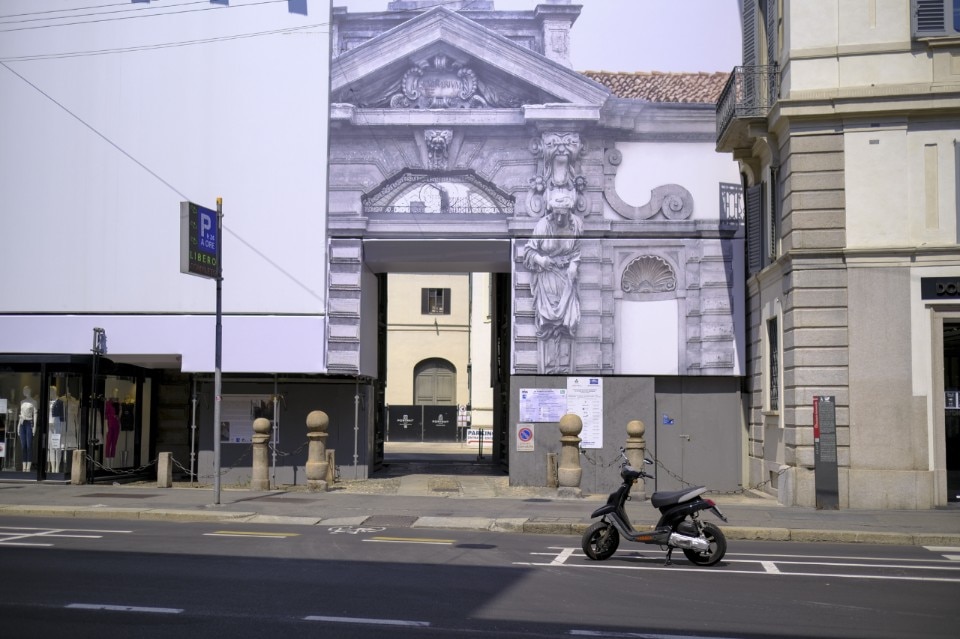
Anyway, I continue my venture and I go straight: from Via Palestro to San Babila. Piazza San Babila today, in June 2020, is not at its best. It might be because of the construction at the M4, or because of everything else. But has it ever been at its very best? Has Piazza San Babila ever been beautiful, pleasant, usable? Piazza San Babila, to be honest, is a mistake, a far uglier mistake than Piazzale Loreto. The only difference lies in the fact that San Babila, unlike Loreto, is an irremediable fallacy, unless they decided to demolish it in - for the moment - unknowable times.
From San Babila, however, there is an advantage, being able to continue along Corso Buenos Aires and towards Piazza del Duomo. I turn into the inner streets, to the Apple Store and I waste more time.
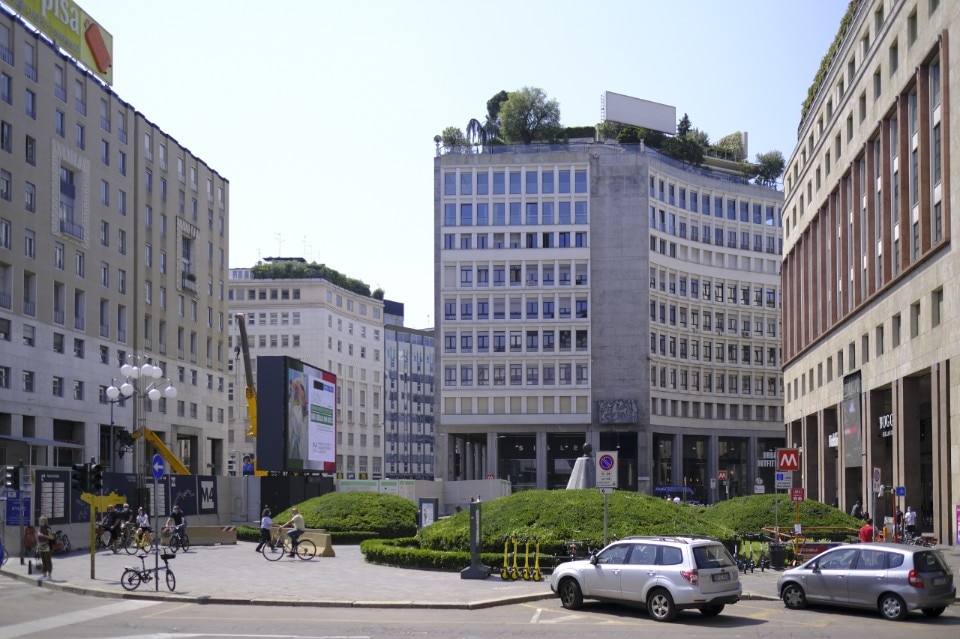
On June the 2nd a sovereigntist manifestation in Piazza del Duomo is expected to take place, and right in that square sovereigntist youngsters meet and unfold a ten meters long tricolour flag. We are at the centre.
From the centre you need to move to the outskirts. To get there from Piazza del Duomo - after a brief greeting to the palm trees of Starbucks, not at their best, poor things, was it the bad weather? - you need to take Via Torino. Via Torino has been for generations of Milan citizens, who are now in their forties, a street of shops where fourteen-year-olds tried to get (I mean from scratch) their own wardrobe. Via Torino today, despite the most recent shops, is still a slightly faded and old-fashioned street. Not as old as Piazza Diaz, with its night clubs, travel agencies, and Peugeot 205 CJ (Cabriolet Junior), but more like that playing field where time, urban planning and commercial investments collide, in comparison to other streets of the centre with a more radiant coat of arms. For example? Via Palestro, for example.

After walking past Piazza del Duomo, the main effect of this little trip on foot from one side of Milan to the other is that your mind gets free from all your thoughts, except for that of walking. You find a concentration resembling meditation when you walk alone for miles, talking only to a few passers-by to ask for directions (because I obviously had a smartphone, but I deliberately decided not to use it in order to ask for information to passers-by).
As I mentioned at the beginning, this kind of small venture is very good for your mind, maybe less so for your feet, but we’re not at that stage yet, that comes the following day.
Via Torino, then: a street for riders on electric bicycles, churches that close at the end of the mass, stalls, sweets. The street where shops used to be, - the Gallery - frequented by boors during the 90s, today there’s nothing left.

Even the Columns of San Lorenzo, another must-see, given the time, are asleep. Neither pusher, nor rider. Almost no human presence and by now it’s half past 12 in the morning, however, it’s a feast day.
Corso di Porta Ticinese is the direct consequence of the path I took and allows me to say goodbye with a short pilgrimage to Bar Rattazzo.
The Bar Rattazzo has been a significant piece of the night education for many generations of once young Milan citizens, if it is true - and it is true - what Piero Rattazzo himself says: "Sofri, Bompressi, Tobagi, Toni Negri, Pietrostefani, Curcio, Ferrara, Lerner, Mentana (who played the "anarchist") came through that place. Also, Vallanzasca, a boy who used to stay at Parco Vetra, was there. At that time the park wasn’t like today, it was a meeting place for fools". Then we all went there. After Piero’s death on December 23rd of last year, now the official closing of the place in the post Covid has also arrived. Let’s go on.
Piazza XXIV Maggio, the Porta Ticinese gate is a mirror of the one at Porta Venezia, in our, in my path. Sitting in the middle of the gate I see the real protagonists of the city, always on the move: the riders. No matter the delivery service for which they work, they stay there and wait for the call, the app wakes up and makes them move, they rest, talk, wait. From there it takes very little time to reach Corso San Gottardo and via Meda.

I leave the real centre behind and move towards the outskirts. The only differences you can remark are subtle and nuanced, because as I said before, there are no moments of distinct separation in Milan, maybe only between those who stay inside and outside the outer ring road, because as long as you stay in the inner one everything is the same.
Corso San Gottardo and via Meda lead me to the borders of the metropolis, towards one of the most visually spectacular stops of this little tour, the Famagosta junction, which is still eternally marked by a plaque commissioned - and hopefully regretted - by the mayor of Milan Gabriele Albertini at the beginning of the ’00. From Famagosta onwards the city of Milan ends and becomes something different.
At the ATM stop in Famagosta, some drivers wait, talk, smoke a cigarette. The interchange parking lot is obviously empty. Once there, it’s also worth to make a small detour to the Sant’Ambrogio district, at the Barona, where there is an incredible church: San Giovanni Bono, a concrete pyramid that reminds me of spomenik in former Yugoslavia, showed to the world of non-believers by Guè Pequeno in the video of Trap Phone (2018).

From San Giovanni Bono onwards, the city is once again imperceptibly fading away. Green again, but it is a dry green, more yellowish, that of south-west Milan. A different countryside, where there are football fields abandoned for decades, where grass has grown around the doors, and then the Cantalupa district.
The Cantalupa district is located a few kilometres after the Famagosta junction. It is a fairly isolated residential neighborhood, easy to find but, without a car, it is difficult, complex, to leave. Cantalupa can be seen from the Autostrada dei Giovi, the A7 motorway from Milan to Liguria, but obviously nobody ever stops there. Unless you want to stay at the legendary Hotel Alga, clearly visible from the lanes of the motorway.
In Cantalupa there is a bridge that passes over the motorway, a metal bridge on which I obviously climb, to get off at a rest stop on the opposite side. Reaching an Autogrill on foot is an experience that I would recommend, also because from that Autogrill, going slightly back towards the Barona, then towards Milan, it is possible to take a small road between rice fields and houses that leads directly to Assago.

Assago: where it would have been better to arrive in the morning, when I left, so ten, eleven hours ago. I proceed along a ditch full of frogs and fish, on the other side of the ditch, close to the highway, there is one of those parts of the metropolis colonized by desperate pensioners that want to create their own urban garden - or maybe not so desperate, right? - but the sight of a toilet connected directly to the ditch kind of gives me that idea.
There are also people fishing in that ditch, a group of four boys.
For a few kilometres you still walk in the middle of nowhere: rice fields, half a dump, other unirrigated rice fields. You may think of being in Vercelli until you finally get to Assago.
There should be a pedestrian and cycle bridge there in order to take the traveller back on the other side of the ring road, to the subway, the same Green Line, the same M2 of 6.30 am, but the bridge is not yet open, so you need to continue towards the Forum for a few more hundred meters.
On arrival, once you’ve finished the trip through Milan, you don’t care about anything, you’re happy to have succeeded, even if there was no doubt, even if you didn’t realize anything new. Which is in a way an oriental thought - that meditation thing I wrote about many lines ago, isn’t it? You’re the same as before, but you walked 25 kilometres.


